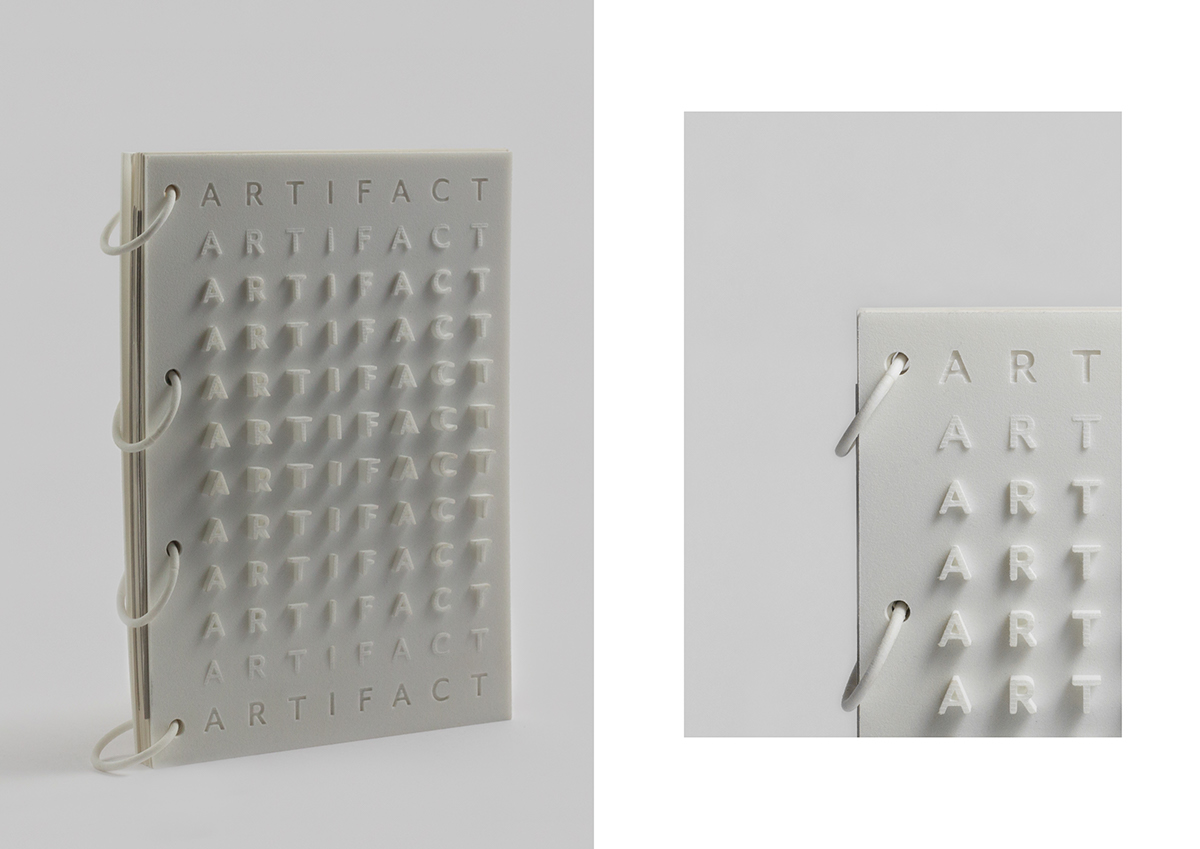Artifact: An Exploration into the use of Modern Digital Fabrication Technology in Book Design
The physicality and tactility of printed books and the personal, sensory experience they provide will always be a significant part of how we digest text and information. With the rise of digital publishing, the future of the traditional printed book is in question. How do we create books that provide a reading experience that cannot be obtained by reading the same content on screen? How can we embrace new technology to create books that will not be forgotten, but are pieces of art—their physicality being key to the way in which the reader interacts with them?
Artifact is a response to these questions, exploring how 3D printing and laser cutting technology can contribute to the unique physicality of the printed book.
The poem Do Not Go Gentle Into That Good Night by Dylan Thomas was used as the content; a fitting metaphor for the future of the printed book and its changing nature in society.
Outcomes:
This project was research-led. Research involved exploring concrete poetry, the use of syntax in written language, testing digital fabrication technologies, prototyping materials, textures, forms and binding techniques, and observations of user interaction. These informed the design of my final outputs: a set of three experimental poem books, alongside a process book.
The “Block” Book
3D printed using a Selective Laser Sintering (SLS) process as a single piece—no binding or assembling required. Each page is tactile. Selected lines are raised further out of the page, emphasised through stronger shadowing.
The Scroll
3D printed using SLS process, as a single piece. 3D forms were created while still allowing for a bendable page, 0.2mm thick, almost like paper. The words are raised to various heights, creating various densities of shadows. To ‘close’ the book, the viewer must roll the page up and fasten the closure.
3D printed using SLS process, as a single piece. 3D forms were created while still allowing for a bendable page, 0.2mm thick, almost like paper. The words are raised to various heights, creating various densities of shadows. To ‘close’ the book, the viewer must roll the page up and fasten the closure.
Laser Cut Engraved Book
Using laser technology combined with material choice to explore legibility, perception and syntax. The position of the reader directly affects the legibility. Unless viewed from directly in front, the book is a collection of arbitrary letters suspended in space. This challenges traditional conventions; needing to be closed in order to be read. The cover does not hide the content, rather, invites the viewer in. Not unlike the wear-and-tear of a traditional paperback, the pages accumulate scratches, marks and fingerprints—a record of human interaction over time.
Using laser technology combined with material choice to explore legibility, perception and syntax. The position of the reader directly affects the legibility. Unless viewed from directly in front, the book is a collection of arbitrary letters suspended in space. This challenges traditional conventions; needing to be closed in order to be read. The cover does not hide the content, rather, invites the viewer in. Not unlike the wear-and-tear of a traditional paperback, the pages accumulate scratches, marks and fingerprints—a record of human interaction over time.
Through experimenting with this technology, one thing became clear: The rise in digital technology will not be the downfall of the printed book. Instead, it allows for endless possibilities for book designers to revisit the book as an object, explore their physicality and create a truly unique reading experience.
Alphabyte Award for Information Design
Featured on Adobe Student Show














